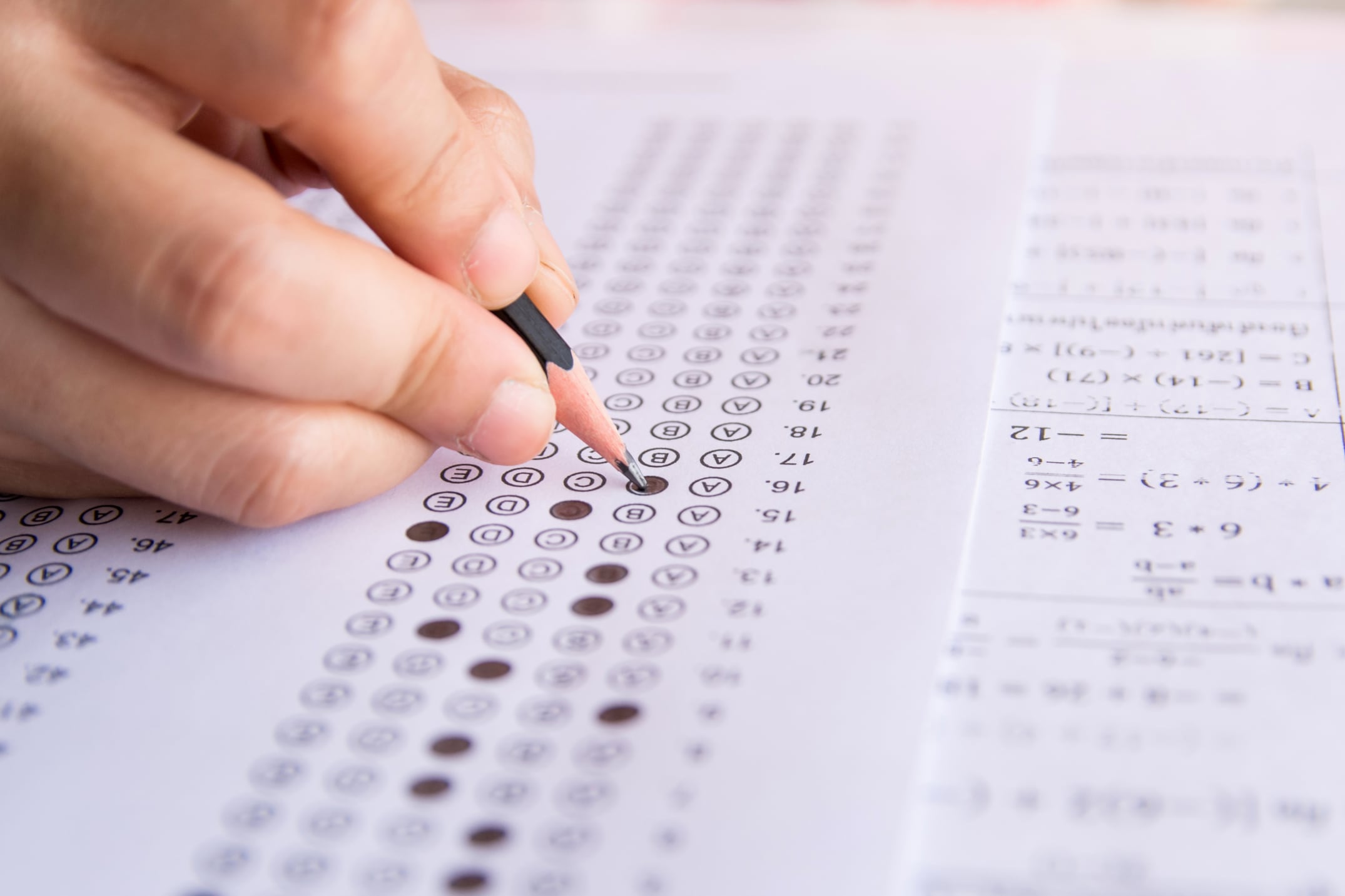Significant disparities between New Jersey’s white and Asian American students and their Black and Hispanic peers grew bigger on last spring’s state standardized tests, while proficiency rates among Newark’s relatively young students suffered the biggest declines from pre-pandemic levels, according to a Chalkbeat analysis of the scores.
There were drops in proficiency rates in math and English language arts on the spring tests for all student groups in the state. And Newark’s struggles with achieving math proficiency have only grown more pronounced.
The scores on the New Jersey Student Learning Assessments, known as the NJSLA, were released by the New Jersey Department of Education last week. The tests were taken by students in grades 3-8 in math, English language arts, and science.
Students took the tests, which were created by Pearson Assessments, between April and June of last school year. It was the first time they took the test since 2019, due to disruptions from the COVID-19 pandemic. (In 2021, Newark students took a different exam that also indicated significant learning loss.)
Comparing this year’s test scores to results from pre-pandemic years can give educators and families a clearer look at how the pandemic stalled progress in student learning.
New Jersey also saw a glimpse of this earlier this year on “the nation’s report card,” which showed significant dips in math and reading scores among fourth and eighth graders on the National Assessment of Educational Progress.
On average, the state test results show that students are performing at the same levels of students in the same grades in 2015, undoing years of steady progress before the pandemic.
“The issues we’re seeing — the achievement gap, the lower percentage of students in Newark meeting or exceeding state learning standards — pre-date the pandemic, but have certainly been exacerbated by it,” said Ronald Chaluisán, executive director of the Newark Trust for Education, in a phone interview on Tuesday.
Statewide proficiency rates showed a growing gulf between the highest and lowest performing student demographic groups.
For example, 83.3% of all Asian American students were proficient in English language arts in 2019, compared to 37.9% of all Black students. This year, that gap grew by nearly 3 percentage points. About 78.8% of all Asian American students were proficient on the English language arts exams, while 30.5% of Black students achieved proficiency, according to an analysis by the state education department that was presented earlier this month at a state Board of Education meeting.
Meanwhile, in Newark public schools, proficiency rates in math for third and fourth graders — many of whom were already falling short of achieving proficiency on the test before COVID — fell significantly from their peers’ scores three years ago.
During a school board meeting in September, district leaders shared a first look at these results, which Superintendent Roger León called “horrible” before promising a focus on tutoring this school year.
The share of third graders in the district who met proficiency standards in math decreased from 35.4% in 2019 to 15.1% in 2022. Similarly, fourth graders meeting proficiency standards in math decreased from 32% in 2019 to 12.2% in 2022.
“Pretty consistently across the board a huge percentage of our students have not done well on those exams over many years,” Chaluisán said.
Data from the spring exams should be used to inform district leaders on how to proceed next with students who need the most support, said Steven LoCascio, director of Kean University’s educational leadership program.
“We have to be very careful not to go on business as usual with our students, especially those who aren’t meeting expectations,” LoCascio said. “In math, for example, the concepts build on one another, and if we’re seeing that basic skills aren’t there, then your students will stay at an ongoing deficit, making it more and more difficult for them to succeed in the future.”
Newark’s largest charter school networks were not immune from proficiency declines.
Fifth graders at KIPP schools in Newark went from a 48.2% proficiency rate in English language arts in 2019 to 31% this year. And fifth graders at North Star Academy schools also saw a steep drop in proficiency, going from a 73.8% proficiency rate in 2019 in English language arts to 51.5%.
“Our charter leaders and teachers remain committed to meeting the immense challenges of this moment so that more students can recover socially, emotionally and academically,” said Harry Lee, president of the New Jersey Public Charter Schools Association, in a statement about the test scores.
The Newark Trust for Education has a five-point response to the test scores across the city’s schools, Chaluisán said.
Among the issues the nonprofit education group will focus on in the new year is pushing for an “aggressive timeline” to help students recover lost ground in math and reading, as well as urging a citywide effort to help students through a collaboration between community organizations, families, and schools.
“If we’re not dramatically changing the day-to-day in this collective work of helping our young people, then we are creating barriers for our kids,” he said. “We are really committed to bringing the community together around the urgency to this issue and around the solution to this issue.”
Catherine Carrera is the bureau chief for Chalkbeat Newark, covering the city’s K-12 schools with a focus on English language learners. Contact Catherine at ccarrera@chalkbeat.org.






